When you enter into the world of homeschooling, you probably quickly realize there are many opinions of how to homeschool your children, and everyone wants to give them to you! But you may not understand what all these types of homeschooling may even look like.
In this blog post, we’ll be navigating through the many homeschooling styles and methods that families use to tailor their educational experiences. From classical and unschooling to eclectic blends that defy categorization, we’ll explore the diverse landscapes of homeschooling to view the philosophies and practicalities that shape learning for many homeschool families.
So whether you’re new to this homeschooling gig or you’ve been around for a while, I hope this article helps you understand more about the many types of homeschooling there are.
*Note: This post contains affiliate links, which means I receive a small commission, at no extra cost to you, if you make a purchase using the link. Please see my disclosure for more details.

A note about choosing homeschooling styles
While this article is a run-down of the many types of homeschooling, I want to be sure that you understand that you don’t have to hold to just one homeschooling style like many think you do. Understanding these methods will help you choose curriculum, introduce you to resources, and likely even help you find a community. But you don’t have to be stuck in these choices.
Your thoughts and ideas of how to homeschool your children will likely grow and evolve over time and that’s good! Roll with it.
There is often an unconscious and contradictory labeling of different types of homeschooling in the homeschool world. Classical is “boring, traditional, and stuffy”, while others say it’s “rigorous, comprehensive, and makes a well-rounded child.” On the other hand, unschooling is “free, fun and honoring your child”, making it sound like any other option is emotional captivity.
Charlotte Mason is a “feast,” possibly implying that other styles are like schooling through a famine. School-at-home “isn’t even homeschooling”, setting more traditional homeschoolers on a throne looking down on the peasants. I could go on but I won’t.
These statements aren’t usually said with malice, they are said with passion and fervor and a lack of understanding of other points of view. Of course we want everyone around us to find the same joy and freedom we have found in our homeschool!
Just like a sports team, we tend to take sides in the world. We find what works for us and look down our noses at every other parent trying to do the best they can with what they have for their precious children that they love more than anything.
The thing is, homeschooling is not a sports team. It’s not Us versus Them. You don’t have to pick a side. Or a style. And if you do, remember we’re all on the same team! Please show your passion and excitement for what you do, but please give others the freedom to find that same passion for themselves.
There is no right and wrong in homeschooling as long as kids are learning!
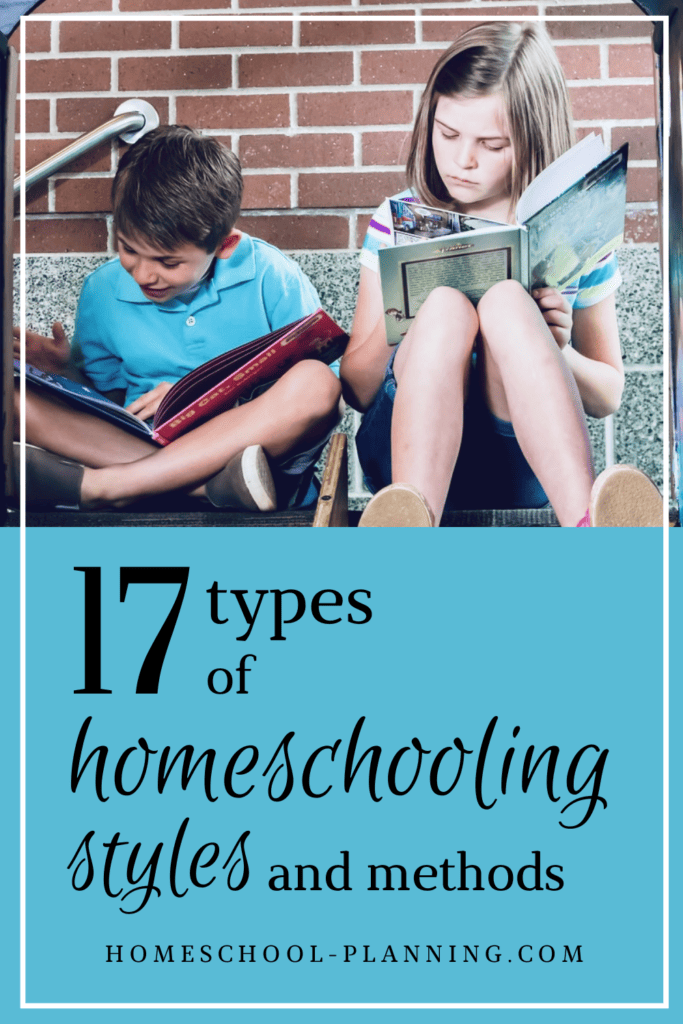
Types of Homeschooling
This list of the many types of homeschooling will likely never be complete, as there are more ways to help your children learn than there are stars in the sky. But these are the big ones, the popular homeschooling styles that you will likely see as you traverse the homeschool world.
I hope you use this list for your education and understanding. Perhaps guiding you to find a curriculum and type of homeschooling that works for your family. May it lead your children to wonder and joy in learning.
Do remember that you don’t have to hold to only one homeschooling style, nor do you have to even choose one at all. And if you do choose a type of homeschooling that works for you, you do not have to hold tight to it forever. Allow your homeschool to be shaped as your child’s minds also change and grow.
1. Charlotte Mason
This method is based on the educational philosophy of the 19th Century British educator, Charlotte Mason. Her method involves teaching children as a whole person, using habit-building, narration, dictation, and nature study as primary teaching tools. She also encourages the use of “living books” as opposed to textbooks as primary tools for information.
Curriculum options for the Charlotte Mason homeschooling method include Ambleside Online and Simply Charlotte Mason.
2. Classical
The classical method of education has been around for hundreds of years. This traditional style focuses on three main stages of learning: the Grammar, Logic, and Rhetoric Stages, which are mainly divided by age. Grammar stage students focus on setting a foundation of knowledge. The logic stage focuses on reasoning and analyzing that knowledge. The Rhetoric stage focuses on using that knowledge to communicate the information.
Classical learning uses tools like copywork, narration, and dictation. Latin is also taught for a deeper understanding of the English language.
Curriculum options for the Classical homeschooling style include Classical Academic Press, Well-Trained Mind Press, Logos Press, Memoria Press, and Classical Conversations.

3. Traditional/School-at-home
A traditional or school-at-home approach to homeschooling is basically transferring public school traditions to the home environment. These homeschoolers will likely have thoroughly planned out days and schedules, using a complete all-in-one curriculum for their students.
Traditional homeschoolers are likely to use desks in their home and follow recommended state standards for each grade level. They will often use traditional textbooks and workbooks as a guide for every subject, though online options are getting more popular.
Some will also use the ‘school-at-home’ term for those doing distance learning through public or private schools. Note that not every curriculum used at home is homeschooling. Online private or public schools remove all autonomy from the parent and are not considered homeschooling.
Many homeschool curricula can be considered a traditional curriculum, including BJU Press, Abeka, AOP Lifepac, and Power Homeschool.
4. Eclectic
Eclectic homeschoolers are those who do not ascribe to any one type of homeschooling method, but use several. They think of curriculum like a buffet and take what works at the time, leaving the rest. Eclectic homeschoolers use whatever type of curriculum that works for their children and lifestyle at any given point, often mixing and matching styles for different children or even subjects.
They may teach math and writing using classical methods while using literature-based resources for history, and Charlotte Mason style for science, taking breaks every few weeks for unit studies.
Some curriculum packages that are considered eclectic are My Father’s World and Timberdoodle.
5. Literature-based
A literature-based homeschool curriculum uses books as a basis to teach different subjects. While many curricula use textbooks, this approach uses engaging books and stories that make learning interesting. Through related discussions and activities, these lessons are then expanded to cover several subject areas for a well-rounded curriculum.
Some popular options include Sonlight, Build Your Library, Bookshark, and Beautiful Feet.
For more information on this type of homeschooling as well as curriculum options, check out my article about Literature-based Homeschool Curriculum.
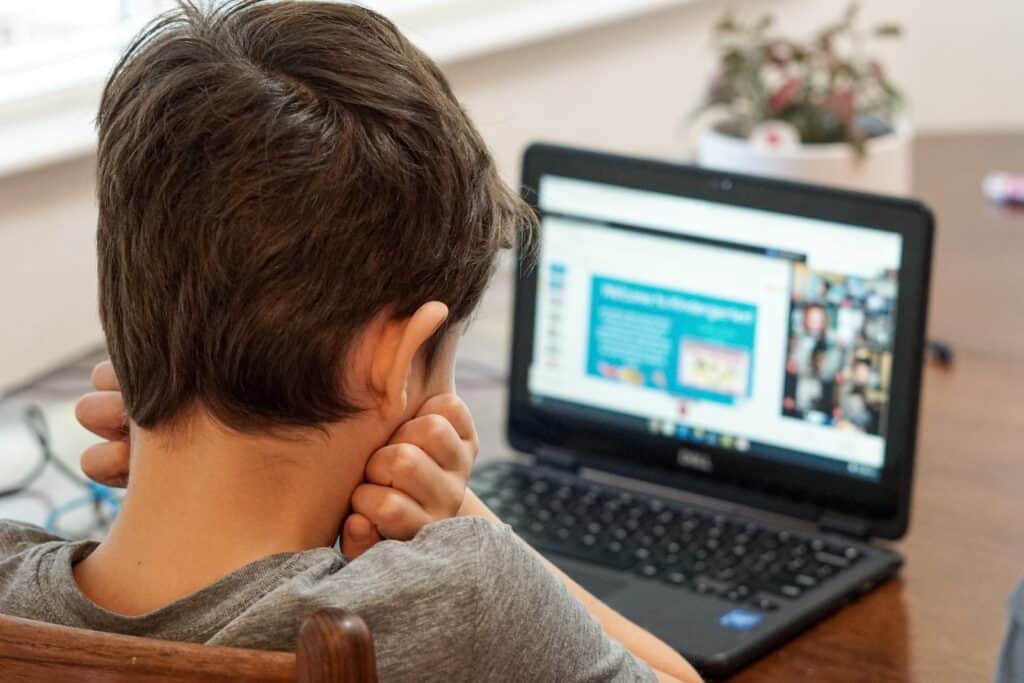
6. Online Schooling
Online homeschooling is a way of learning where kids get their lessons and assignments on the internet, often from home or anywhere with an internet connection. Some programs use traditional teachers, while others require more parental involvement. Parents can pick a full program for their student or just one subject or class.
Online homeschooling programs are often taught or designed by experts on a given subject so there is a high standard of knowledge. They can be the best of both worlds, taking some of the difficulty of planning, grading, and teaching off parents while still allowing them the flexibility that homeschooling can bring.
Note that not every curriculum used at home is homeschooling. Online private or public schools remove autonomy from the parent and are not considered homeschooling.
Some popular online homeschool options are Easy Peasy, Miacademy, Schoolhouse Teachers, Time4Learning, Origins Curriculum, and Monarch.
For more information on online learning and even more options, check out my article with the Ultimate List of Online Homeschool Programs.
7. Unschooling
Unschooling is an educational philosophy that believes children should be trusted to learn and pursue whatever interests them, similar to how adults are free to learn. There is typically little structure to unschooling – no planning, curriculum, or scheduling. Even the name reflects the goal to remove any semblance of traditional schooling from learning. Unschooling has grown in popularity because of the writings of a former public school teacher named John Holt.
This approach is completely child-led with parents being students of their children, watching what interests them, helping them find resources and tools to learn, and guiding them through it all. Some new to unschooling may think you can set your kids free to learn and do their own thing. But true unschooling parents will work hard to help their kids learn and grow as they discover the world around them and their passions.
Critics of unschooling consider a child-led approach to be a hindrance to a well-rounded education as children are never required to learn something they do not wish to. Some also consider the lack of structure to be an issue for the possibility of having a successful life after high school.
8. Hybrid/University Model
The University Model of schooling is a hybrid approach to homeschooling, where students will attend a school in person (or online) for 2-3 days per week and homeschool the other days. Teachers will give assignments for students to complete at home on their home days, similar to how a college or university would. This is where the name comes from.
Some public and private schools offer hybrid options like this, while some are homeschool programs. Because someone other than the parents is typically in charge of the student’s learning, this is not always viewed as a true homeschooling method. But is a wonderful transitionary option for many families who prefer more help and accountability than other homeschooling styles.
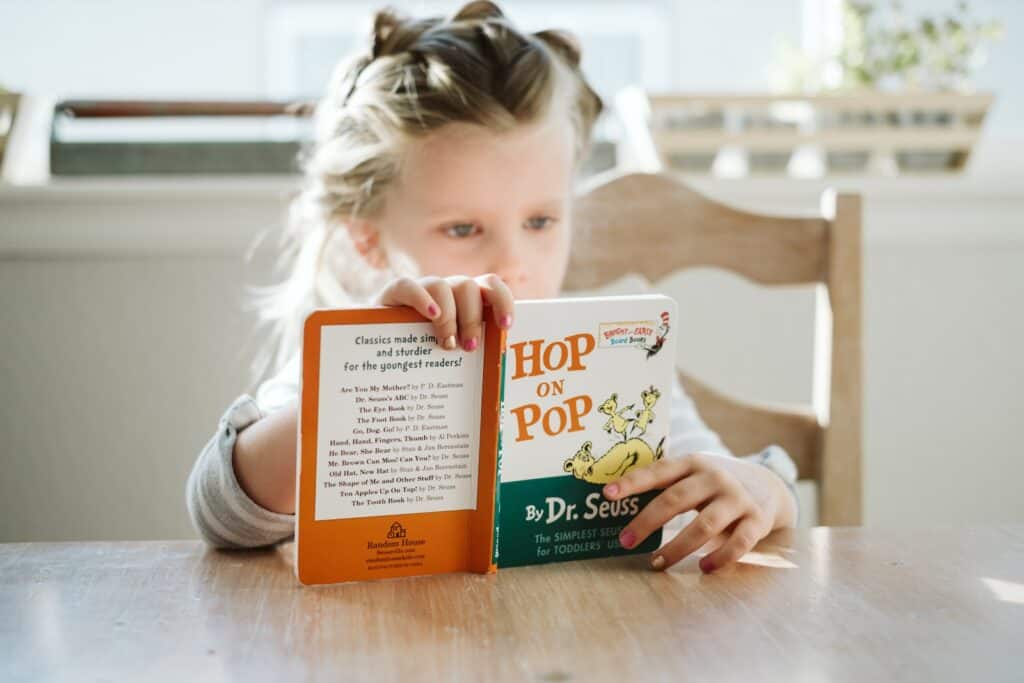
9. Montessori
Montessori education was developed by Maria Montessori in the early 1900s. It is a very hands-on approach that uses children’s natural curiosity as a basis for learning. The method encourages setting an environment for learning within guided spaces and basic routines. It encourages self-directed learning with high-quality tools to learn life skills.
At risk of over-simplification, the Montessori method re-creates the home in a classroom setting so homeschooling using this method can be quite natural for many families.
This homeschooling method lends itself easily to preschool-age children, but the methods can be expanded to work for older children as well. It can also blend easily into other methods, particularly unschooling.
Check out Shiller Learning and Montessori for Everyone for some great options.
10. Unit Studies
Unit studies are short thematic studies that are based around a central theme but incorporate several subjects. They may be a few days long, or up to six or even 8 weeks of study. They are often centered around a time in history, a specific science theme, a book, or even a holiday but include lessons that cover all subjects including language arts, science, history, and sometimes even math.
One thing many families like about homeschooling with unit studies is that it is easy for large families with kids of multiple ages. Unit studies are often taught to kids of all ages together, and then further lessons and work are assigned to individual students according to their age and abilities. This helps parents not be pulled in quite as many directions all at once like with more traditional types of homeschooling.
Some great curriculum options for unit studies include Gather’Round Homeschool, UnitStudy.com, and Five in a Row.
11. Project-based
Project-based homeschooling is learning with a central project as a basis. Based on the Reggio Emilia educational philosophy from Italy, it is student-led and based on their interests. You as a parent will be a guide along the way. Your student may decide to begin a garden, build a robot, or start a business. All their schoolwork will be based on this learning.
This method of homeschooling can easily be used in conjunction with some more formal work or an exclusive approach in your homeschool.
For more information on this style of homeschooling, check out project-based-homeschooling.com
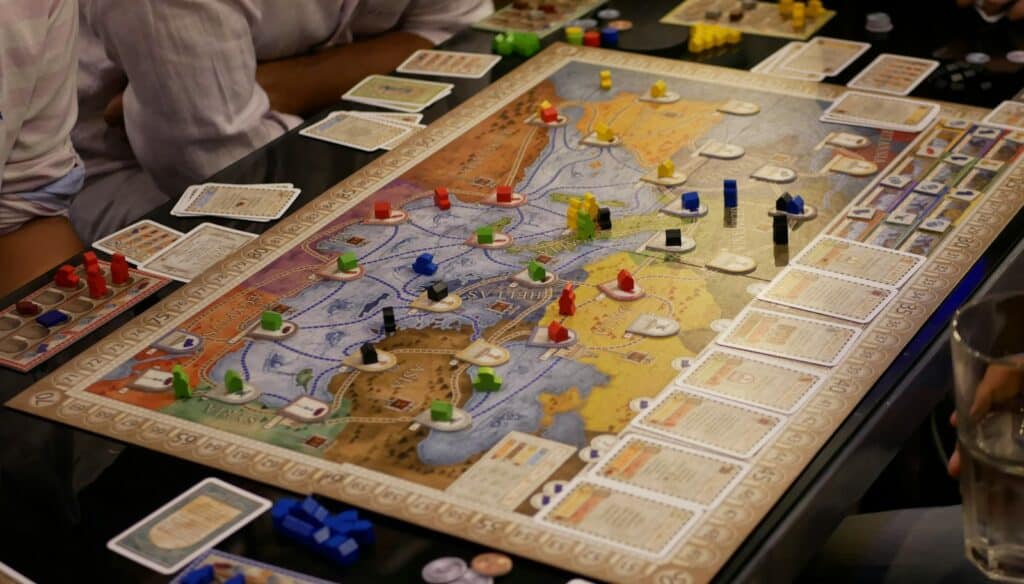
12. Gameschool
Gameschooling is a relaxed style of homeschooling that uses games to teach concepts. This method may be used as the sole basis for learning or in conjunction with other styles of learning. There are so many amazing games out there that are quite educational. From math games to geography games to science games – there are games for every subject.
Get some great ideas for gameschooling from Waldock Way.
13. Relaxed
Relaxed homeschooling is not as much a curriculum style as an approach to homeschooling in general. A relaxed homeschooler is flexible and not tied to strict plans or schedules. They will use curriculum as loose guidelines and change them as needed. Grade levels are arbitrary, and relaxed homeschoolers will teach their child at the level they’re at rather than the level they should be. Schedules and plans are loose and often change according to the needs of the family.
Relaxed homeschooling can often be incorrectly equated with eclectic homeschooling or even unschooling, but though it can be used in combination with other styles of homeschooling, it truly is an approach all its own. It is also not as commonly referenced as many homeschooling styles and will often vary in definition from family to family.
Any homeschool curriculum (or even no curriculum!) can be used as a relaxed homeschooler. But for some ideas on ways to make your homeschool more flexible, check out my article on how to have a flexible homeschool schedule.
14. Waldorf
Waldorf is an educational method developed in the early 1900s by an Austrian man named Rudolf Steiner. This approach believes that humans live in three spheres of activity – the head, the heart, and the will (hands). In order to teach in a balanced way, we must meet all three needs. Waldorf education has an emphasis on the spiritualness of humans and encourages respect for all creation, though it does not hold to one religion.
Waldorf also encourages play and hands-on experience, especially in the younger years, with much learning in art, music, and nature. It discourages electronics especially when young. It uses a lot of fables and myths to teach, emphasizing age-appropriate learning and delaying formal academics.
A popular homeschool curriculum based on the Waldorf approach is Oak Meadow.
15. Roadschooling
Roadschooling is just like the name implies- schooling on the road. Many families have decided to travel full-time as a family while homeschooling their kids, while others find themselves on the road a lot due to doctor appointments, therapy sessions, or traveling for sports. Homeschooling your kids amidst all this can all be considered roadschooling.
Because of the travel, a roadschool family’s schedule will be less structured, and there may be times when traveling and sightseeing itself will be considered much of the schooling.
To that end, I have heard the term used more loosely in the sense that families will use more traditional methods of schooling while on the road, and in a different sense that traveling is the schooling. Another similar term you may hear is car schooling, when you homeschool in the car.
Because of this there really isn’t a curriculum purely for this approach. Be sure to understand the homeschooling laws associated with whatever US state you call your home base as you travel.

16. Worldschooling
Worldschooling is a simple term to describe using the world as your literal classroom. Families that use this approach love to travel and will use their cultural and sightseeing experiences as a basis for learning. The history, geography, science, and almost any subject that can be explored up close through traveling and sightseeing makes for easy learning.
Worldschooling of course can be followed while using more traditional curriculum as well, but is at it’s most basic for those who want to learn about the world by experiencing it.
For some great information on this homeschooling method, check out Worldtravelfamily.com
17. DIY Curriculum
Who says you have to buy or use someone else’s currciculum to homeschool your kids? You don’t! You absolutely can create your own. Explore the world and come up with projects and field trips that interest your kids. Read lots of books. Have them do writing assignments based off of things they are learning. Cook with your kids to learn math and other skills. Play together. This can be what your kids do for school as your own homemade curriculum.
For more ideas on creating your own curriculum, check out this post at the Unlikely Homeschool.
Bonus: Deschooling
Deschooling is a new-ish concept that is used when transitioning to homeschooling from public schooling. The idea is that after removing your kids from public school, you should spend a few weeks of adjustment to unlearn the ways of public school and start finding your footing as a homeschool family.
This doesn’t mean your kids aren’t learning, but for a few weeks they will be focusing on relaxing and resetting in order to be able to fully engage as a homeschooler when ready. It is also helpful for parents to find their own rhythms as a homeschool parent.
There is no curriculum or rules for this period of time, as that misses the point. However many parents will often include books, movies, games, projects, and other more non-traditional ways of learning. All based around interests of the child.
After you and your child have removed much of the structure and stress of public school from your systems, you should then start working your way toward a more long-term homeschooling style. You can use this list as a starting point toward your personal type of homeschooling.

A note about public school-at-home
There are a few online schooling programs that families can use that are actually public school at home. These are full online programs and are tuition-free for the students as they are paid for through the US public school system. But with those funds, come strings.
Because these are run by the public school system, your student is usually required to be online at certain times and days. They are also assigned work to be completed each day. But they will have access to school teachers for their assignments. Certified teachers will teach your kids according to state standards through these platforms.
Many families will use these virtual school programs because they are free and easy, but they are still public school options. This is not homeschooling due to the lack of freedom with your schedule as well as the lack of say on what is taught. Just because it is done at home does not mean it is homeschooling.
While this can be a great transitionary option for families exploring homeschooling ideas, do not confuse it with homeschooling. Though it is a fabulous option for public school families with problems with social aspects, like bullying.
So if you have tried distance learning through the public (or even private) school system and think homeschooling is not for you, I suggest you consider it again. There is so much more to homeschooling than just doing lessons at your house!
Options that are public school at home are offered through platforms like Connections Academy, K12.com, and others offered through your local school system.
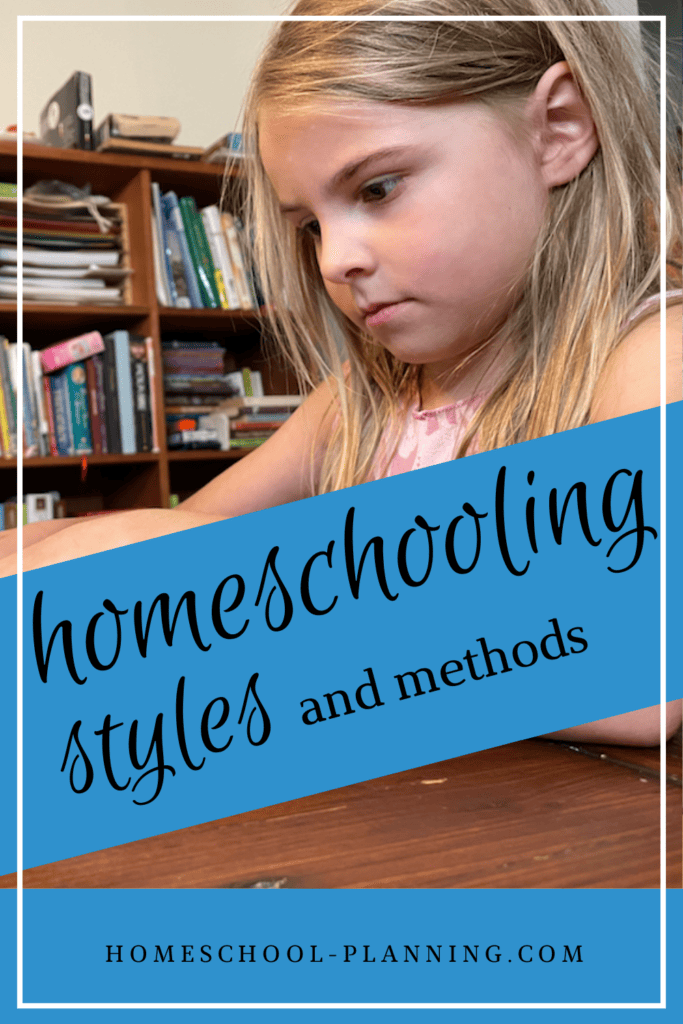
Homeschooling Styles
There is no shortage of styles for homeschooling your children, and I hope this list has helped you understand some of the vast landscape in the world of homeschooling styles. From online schooling to world schooling and back around to traditional methods, you can use any combination to give your children a great education. Whether you choose a type of homeschooling to use for a few days or a few years, I hope you find the homeschool style that resonates with your family.
I’d love to know what type of homeschooling you have found works for your family and what it is you love about it! Let me know in the comments below.
Related Posts
How to have a flexible homeschool schedule











